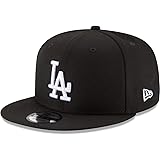
Seattle Seahawks
The new logo replaces the Seahawk blue with wolf grey. The Seattle Seahawks logo is comprised of the face of a sea hawk with the eyes, beak and the neck artistically illustrating the team’s quest for glory, pride and success. The fierce glare in the eyes of the Seattle Seahawks logo is basically derived from the Egyptian mythology where a falcon enjoyed a superior place in the hieroglyphs.
Seahawks Primary Logo
The Seattle Seahawks have a long and storied history when it comes to their primary logo. The first logo was introduced in 1976, the year of the team's inaugural season in the NFL. This original design featured an angry-looking seahawk head facing forward with its wings spread wide. It was created by graphic designer John Nordell and has since become one of the most recognizable logos in sports history.
Today, that updated version remains largely unchanged from what we saw back then – proving just how timelessly classic this particular piece of artwork truly is! With over four decades worth of legacy behind it now (and counting!), there is no doubt that Seattle Seahawks Primary Logo will continue to live on forevermore - serving as a reminder of the greatness achieved by the franchise throughout many years to come…

Seattle Seahawks
2002 - 2012
On March 1, 2002, the logo was heavily redesigned to coincide with the team moving to the NFC. The logo was designed by NFL Properties' in-house design team. The colors were modified to a lighter "Seahawks Blue", a darker "Seahawks Navy" and lime green piping. The logo artwork was also subtly altered, with an arched eyebrow and a forward-facing pupil suggesting a more aggressive-looking bird.
The mask that inspired the Seahawks logo
During the past few years, people have been speculating about the design influence for the Seattle Seahawks team logo, but until recently the fact that the mask that inspired the designers had been publicly identified in a 1975 Newspaper article had been forgotten.
At the time of the 1975 logo design, the central and northern Northwest Coast art (traditional to the Tlingit, Haida, Tsimshian and Kwakwaka’wakw tribes of Alaska and northern British Columbia) were the most readily recognized design styles from the Pacific Northwest Coast.

Seattle Seahawks
1971 - 2002
When the Seahawks debuted in 1976, the team's logo was a stylized royal blue and forest green osprey's head based on Northwestern tribal art.
Football Sports Fan Products




























